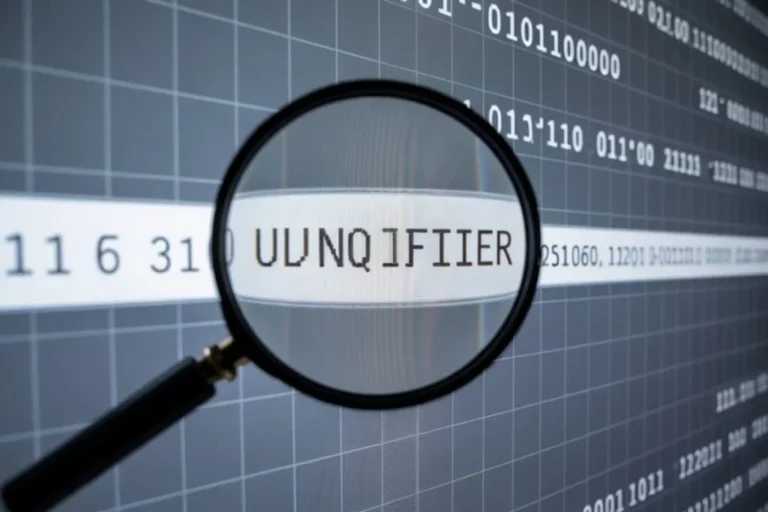In today’s digital world, long alphanumeric strings like 001-gdl1ghbstssxzv3os4rfaa-3687053746 may seem confusing at first glance. However, these kinds of identifiers are becoming increasingly essential across multiple industries—from cybersecurity and data management to user authentication and blockchain technology.
This article dives deep into what 001-gdl1ghbstssxzv3os4rfaa-3687053746 represents, how such identifiers are used, and why they are so important in the modern era of digital security and data integrity.
What Is 001-gdl1ghbstssxzv3os4rfaa-3687053746?
To break it down, 001-gdl1ghbstssxzv3os4rfaa-3687053746 is a unique encrypted identifier, most likely created using a combination of hashing, user session encoding, and timestamping. These identifiers serve as precise references to objects, users, sessions, or data points in digital environments.
You can think of it as a unique fingerprint for a digital asset.
Components of the Identifier
While the full structure may vary based on the system generating it, here’s a possible breakdown:
- 001: A version number or category prefix
- gdl1ghbstssxzv3os4rfaa: A base-36 or alphanumeric hash
- 3687053746: Possibly a Unix timestamp, session count, or randomized seed
These elements together help in securely mapping the identifier to a digital entity without exposing sensitive data.
Why Use Such Complex Identifiers?
There are several reasons for using long and encrypted identifiers like 001-gdl1ghbstssxzv3os4rfaa-3687053746:
1. Security
These identifiers are almost impossible to guess or reproduce. They protect against session hijacking, unauthorized access, or duplication of user data.
2. Scalability
With billions of users and assets being handled online, you need identifiers that will never repeat or conflict. Complex hashes solve this problem elegantly.
3. Data Tracking and Integrity
They serve as audit trails—any action tied to the identifier can be recorded without storing personal data, which also aids in compliance with data privacy laws.
Where You Might See 001-gdl1ghbstssxzv3os4rfaa-3687053746 in Action
Let’s look at some real-world applications where such identifiers play a crucial role.
1. Web Sessions
In secure applications, session tokens often take forms similar to 001-gdl1ghbstssxzv3os4rfaa-3687053746. This unique string might identify your active login session on a banking or e-commerce platform.
2. Blockchain & NFTs
Identifiers like this are commonly used to label blocks, wallets, or non-fungible tokens in decentralized ledgers.
3. Cloud Storage
In platforms like Google Cloud, AWS, or Azure, unique strings track everything from file uploads to user access logs.
4. API Requests
When services communicate over APIs, secure tokens like 001-gdl1ghbstssxzv3os4rfaa-3687053746 are used to authenticate users and validate permissions.
5. Software Licensing
Some software tools use such unique codes to tie a license to a specific user or machine, ensuring piracy protection.
Is 001-gdl1ghbstssxzv3os4rfaa-3687053746 Personal?
On its own, no. The identifier does not carry any personal data like your name, email, or phone number. It’s a random, encrypted label that maps to something stored elsewhere—securely and privately.
This distinction is critical for compliance with privacy regulations like:
- GDPR (General Data Protection Regulation)
- CCPA (California Consumer Privacy Act)
Such identifiers allow systems to operate efficiently while keeping user data safe and anonymous.
Benefits of Using Unique Encrypted Identifiers
Let’s outline the key benefits again for quick clarity:
✅ Enhanced Privacy
No direct personal data is stored within the identifier.
✅ Prevents Duplication
Even if two users create identical data, each record gets its own unique ID.
✅ Easy Data Association
Databases and servers can quickly locate and link relevant information via the identifier.
✅ Useful for Debugging
When issues arise, engineers can trace problems back using the identifier without exposing customer details.
✅ Boosts Trust in Digital Systems
Users feel more secure knowing their data is uniquely and privately encoded.
How Are These Identifiers Generated?
Systems use cryptographic hash functions or UUID (Universally Unique Identifier) generators. A few common methods include:
- SHA-256 Hashing
- UUIDv4 (Random-based)
- HMAC (Hash-based Message Authentication Code)
- JWT (JSON Web Token) Encoding
The specific format of 001-gdl1ghbstssxzv3os4rfaa-3687053746 likely combines multiple techniques to ensure randomness, integrity, and traceability.
Can You Decode or Reverse It?
In most cases, no. These identifiers are one-way hashes. Unless you have access to the key or database that maps the ID to its underlying record, you can’t reverse-engineer it.
That’s exactly what makes them secure.
Common Use Cases by Industry
Here’s a look at how different industries use identifiers like 001-gdl1ghbstssxzv3os4rfaa-3687053746:
| Industry | Use Case |
|---|---|
| E-commerce | Order tracking, cart IDs |
| Healthcare | Patient session IDs (anonymized) |
| Finance | Transaction references |
| Education | Student logins, assignment tracking |
| Government | Secure citizen service identifiers |
| Media | Stream session IDs, view tracking |
Final Thoughts
The identifier 001-gdl1ghbstssxzv3os4rfaa-3687053746 might look random, but in the background, it’s doing a lot of heavy lifting. From maintaining user privacy to enabling seamless operations across apps and databases, this little string plays a massive role in modern digital life.
Understanding how and why such identifiers exist gives you a better appreciation for the secure, interconnected world we live in. The next time you see a code like this, know that behind it lies a robust system ensuring accuracy, privacy, and trust.











